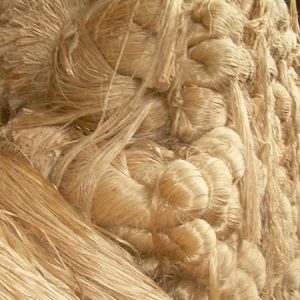
An eco-friendly & biodegradable fiber known as Jute which occurs naturally & is easily affordable by all. “The Golden Fiber” is another name associated with Jute, which was derived from its natural looking form such as, golden and natural shine looks. This can be uses for making consumer products like rugs and bags.
In India, with the evolution of Jute Industry, Jute Sacks were among the foremost developments that took place earlier. Sacks made of Jute were produced in bulk as it could be utilized for various kinds of Jute bags such as sacking bags which were woven completely from the fabrics made of jute. These bags are made available as twill as well as plain bags.
Related Projects:- Jute and Jute Based Project, Oil, Coir, Shopping Bags Projects
The use of jute or sacking bags is to pack sugar, cement and various articles which are bulky in nature and those who contains weigh between 50 to 100 Kgs. These bags are made according to the specifications provided by the consumers like size, shape and design. In order to meet the increasing jute bags’ demand in several industries like cement, agro-based, and farm sector. The Jute Industries is known as the most vital industry in terms of economy contributions. Around 4 million families are benefitted by this industry as it offers employment to approx. 2.6 lakh factory workers. Jute Industries is one of the labor-intensive industries, which contributes around Rs. 1200 crores per year to country’s exports.
NPCS’s brings a complete analysis of Jute bags manufacturing unit, these contains from raw material to machinery requirements guidance.
Related Books:- Jute & Coir Products
Demand:
Because of the vital properties of fiber, products made of jute are quite popular both at national and international level. Some of the advantages associated with jute is that it is bio-degradable, cheap, and doesn’t not emit any poisonous gas while burning it. With the help of advanced technology, the transformation of jute into versatile & attractive fiber was easily achieved successful. India is among the most important countries that produces jute, involving around two-thirds of allied fibers and jute production. In 2006, as per UN Food and Agriculture Organization, India has produced approximately 2041tonnes of jute-like fibers & jute. Some of the vital areas that produces jute nationally includes Tripura, Andhra Pradesh, Orissa, Assam, Bihar & West Bengal.
Related Videos:- Jute and Jute Based Project
Raw material:
One of the major cash crops is raw jute crop for farmers. One can avail two benefits by cultivating raw jute such as fiber for industrial usage and jute stick for multiple uses. In India, Jute cultivation is dispersed in very uneven way. These annual fluctuations are all due to three reasons.
- a) the average prices of raw jute achieved during last season.
- b) Rainfall fluctuations at the time of sowing.
- c) The output achieved with the help of competing crops at the time of last season.
Many Jute growing areas likely to compete with the simultaneously growing crops such as paddy. The land allocation among these two crops are decided based on the annual fluctuations in jute prices as compared to paddy prices. Such Jute fibers are available in laminated and un-laminated roll form. For manufacturing of bags with the help of one roll of jute fiber, there can be approximately 350 to 400 jute bags of size 20” x 15” can be manufactured. Minimum price rate for such Jute bags roll is Rs 35 to Rs 40 per meter.
Related Books:- Handbook On 100% Export Oriented Jute & Jute Products (Eco Friendly Projects)
Some of the additionally required bags are raw material bamboo sticks, chemicals, chemicals and auxiliaries, dye, hook, Jute fabric, laminated and non-laminated jute fabrics, packaging materials, printing gum, PVC buckle and sewing nylon threads.
NPCS’s provides all the updated kinds of machinery available in market for the process of Jute production:
Machine requirements:
- Fabric Cutting Machine.
- Heavy Duty Sewing Machine.
- Ordinary Sewing Machine.
- Stencil Equipment for Printing Coloring Paints.
- Lockstitch Machines.
- Woven Sack Bag Cutting Machine.
- Side Sealing Machine.
- Cottage Steamer.
- Cutting Machine.
- Cutting Table.
- Dye Paste Stirrer.
- Lamination Machine.
- Rubber Wiper.
- Scissors, Measuring Tape and Other Equipment.
Related Books:- The Complete Book on Jute & Coir Products (with Cultivation & Processing)
Production Process:
There are various activities involved in the process of production in this industry like cultivating raw jute, jute fiber processing, weaving, spinning, and dyeing, marketing as well as finishing of jute in its raw form and transformed into finished good. In today’s time, there are around 73 mills of jute which are in operation & 100 lac bales of fiber is produced in India. Apart from this, many small-scale industries are in operation for producing twines, decorative, handicrafts, paper & pulp from jute, particle board etc.